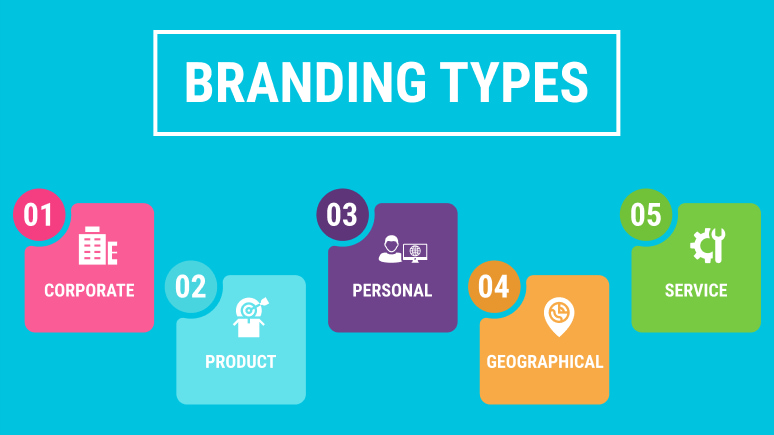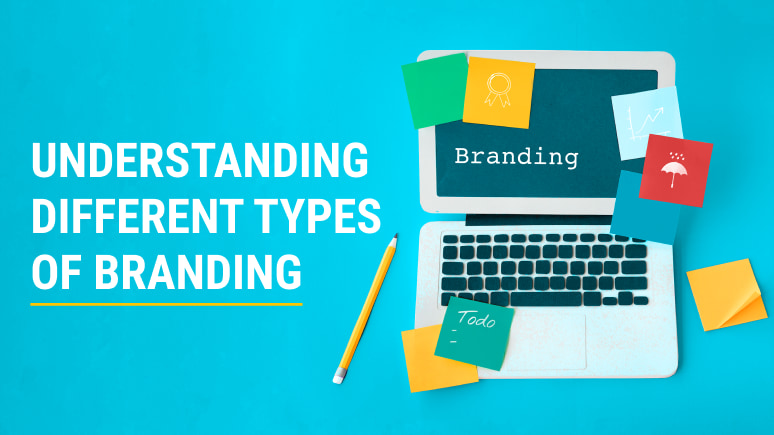Branding. It’s a ubiquitous term, constantly buzzing in the business world. Yet, what truly lies at its core? It transcends a snazzy logo or clever tagline. It’s the fundamental essence of how your Hamilton business portrays itself. It’s the voice, the emotions, and the client experience you curate. But the beauty lies in the diversity.
It isn’t a rigid mold; it’s a vast landscape waiting to be explored. By delving into the various types of brands, you unlock the power to craft a strategic and impactful approach. Imagine this: marketing and branding are seamlessly intertwined. They are forming a potent force that catapults your firm to unimagined heights. That’s the magic that awaits you.
Now, let’s embark on a journey to unveil the intricacies of positioning. We will showcase its remarkable ability to forge a deep connection with your TA, explore its various facets, and empower you to craft a tactic that resonates with your goals.
The Spectrum of Branding Types

Branding type is not a one-size-fits-all concept. It unfolds across a spectrum. It offers diverse tools for firms of all shapes and sizes. Here, we’ll delve into some critical types of hallmarking and how it can empower your firm:
- Corporate. It is the overarching identity of your firm. Think of it as the cornerstone. It encompasses everything from your logo and brand voice to firm culture. A stellar example is Stelco, a Hamilton steel giant. Their iconic logo and commitment to sustainability solidify their image as a leader in the industry.
- Product. This type of branding focuses on creating a unique identity for each product or service you offer. Consider The Dundurn Castle, a Hamilton landmark. Their distinct hallmarking for historical tours and educational programs caters to different audiences.
- Personal. In today’s digital age, individuals can leverage personal hallmarking. It’s to establish themselves as experts. Imagine a local Hamilton realtor known for their expertise and friendly demeanour. Their social media presence and online reviews build trust and attract potential clients.
- Geographical. It capitalizes on the positive associations of a particular location. Hamilton’s Art Crawl exemplifies this. It positions the city as a vibrant arts hub, attracts tourists, and fosters a sense of community pride.
- Service. When your firm revolves around services, this type takes center stage. Hospitals like Hamilton Health Sciences build trust and credibility through their reputation for quality care and professionalism.
As a result, the world of marketing and branding is more than just a one-size-fits-all proposition. It’s a spectrum. It offers a diverse toolkit for firms to forge powerful connections with their TAs.
By understanding the various types, you can craft a multi-faceted tactic. It will resonate emotionally and empower you to stand out from the crowd. You can build brand loyalty and propel your Hamilton firm towards long-term success. Remember, hallmarking is a journey, not a destination. Embrace its complexity, leverage its power, and watch your firm flourish.
Product Branding: More Than Just a Name
Product branding emerges as your secret weapon in a marketplace overflowing with choices. It goes far beyond simply slapping a name on your offering. The art of crafting a distinct identity resonates with your TA. It sets you apart from the competition.
Think of Dove soap as a product branding example. Their “Real Beauty” campaign isn’t just catchy. It taps into the desire for self-acceptance, building a loyal following. This emotional connection is a hallmark of powerful product trademarking.
But aesthetics matter, too. Consider Dyson vacuums. Their sleek, futuristic design speaks volumes about their innovative technology and premium quality. It’s a visual representation of the brand promise.
Product branding is about more than just about the product itself. It’s about embedding it within the lifestyle and values of your target audience. As a product branding example, Patagonia, the outdoor apparel brand, champions environmental responsibility. It resonates with eco-conscious clients. It makes their products not just jackets but symbols of a sustainable lifestyle.
Successful product branding creates a story. It tells clients what your product stands for, how it will improve their lives, and why it deserves a place in their world. By crafting this narrative, you elevate your offering from a commodity to a coveted brand.
Service Branding: Connecting on an Emotional Level
Service firms face a unique challenge: their offerings are intangible. Unlike a product you can hold, a service is an experience. It’s a fleeting interaction that leaves a lasting impression. It is where service branding takes center stage. It’s about crafting a brand identity that goes beyond functionality. It fosters emotional connections that cultivate loyalty and trust.
For example, think of a local Hamilton restaurant. Sure, the food has to be delicious, but exceptional service trademarking takes it a step further. It’s the friendliness of the staff’s greeting, individual recommendations, and atmosphere. These elements create a memorable experience, making clients feel valued and eager to return.
Here’s how Hamilton firms can elevate their service branding:
- Clearly Define Your Service Promise. What sets your service apart? Identify your core values and translate them into a clear promise. For example, a Hamilton hair salon might focus on providing a relaxing escape and expert consultations. This promise sets expectations and guides every service interaction.
- Invest in Employee Training. Your employees are brand ambassadors. Train them to deliver your service promise consistently. From active listening to addressing concerns, empower staff to create connections with clients.
- Go Beyond Efficiency. While efficiency is important, focus on the emotional connection within this type of brand. A friendly smile or a genuine conversation can turn a routine transaction into a positive experience. For example, a Hamilton dog walking service we work with takes extra time to understand each pet’s personality. It creates a personalized and loving experience for both dogs and owners.
- Personalize the Experience. Today’s clients crave personalization. Remember their names, preferences, and past interactions. For example, a local Hamilton gym tailors workout plans and remembers member birthdays. It fosters a sense of community and strengthens brand loyalty.
The key is to focus on emotional connection, create memorable experiences, and empower employees within your brand. Then, your firm can leverage the power of service trademarking to stand out.
Corporate Branding: Shaping Perceptions
The corporate type is the foundation upon which all other efforts rest. The overarching narrative defines your firm’s essence – its values, culture, and market position. It acts as a beacon. It guides every firm’s interaction with clients, employees, and investors.
Think of Hamilton’s McMaster University. Its brand role reflects a commitment to academic excellence, research innovation, and social responsibility. It influences everything from their student recruitment tactic to their partnerships with firms.
Here’s how Hamilton-based firms can craft a powerful corporate brand identity:
- Know Your Core Values. What principles guide your organization? Identify core values like integrity, sustainability, or community focus. These values become the bedrock of your brand story.
- Align Your Brand with Your Audience. Understand your key market and tailor your identity to resonate with them. For instance, a Hamilton tech startup targeting young professionals might emphasize a culture of creativity and collaboration.
- Live Your Brand. Authenticity is key for a brand. Don’t just preach your values; embody them in your actions. Consider a Hamilton manufacturing firm that champions environmental responsibility. Their commitment translates to sustainable practices within their operations. It builds trust and attracts eco-conscious clients.
- Be Consistent. Maintain a consistent brand voice and visual identity across all touchpoints, from website and promo materials to employee uniforms and client interactions. Think of a Hamilton coffee chain known for its relaxed atmosphere and locally sourced ingredients. Their trademarking translates to everything—from cozy cafe design to farm partnerships.
Hamilton firms can shape public perception by crafting a clear corporate brand identity. It can build stronger stakeholder relationships and create a foundation for successful promo.
In conclusion, navigating the various types of brands and their roles can feel overwhelming. However, understanding them is critical to building a strong presence. Whether you’re crafting a personal brand as a freelancer or shaping a corporate identity for a multinational firm, it doesn’t matter. Each approach has its own goals and tactics. You can create a cohesive and impactful message by recognizing the types and their applications. It will resonate with your TA. It, in turn, fosters trust, loyalty, and, ultimately, success.

